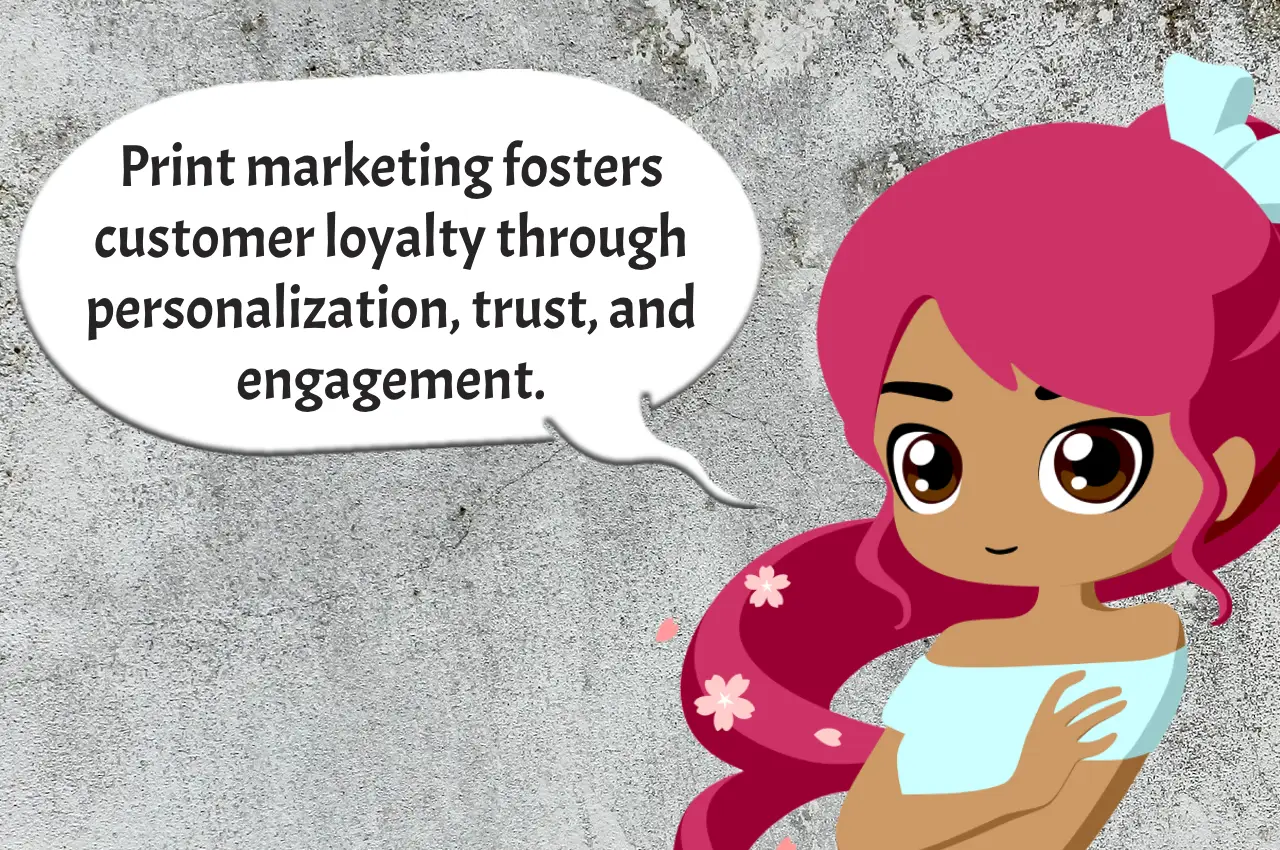In a digital age where marketing strategies often prioritize online platforms and social media, it’s easy to overlook the enduring effectiveness of print marketing. Yet, beneath the flashy allure of digital ads and social media campaigns lies a tried-and-true method for fostering customer loyalty: print marketing. From brochures to direct mail, print materials offer a tangible and personalized touch that can leave a lasting impression on customers. In this article, we’ll explore the myriad ways in which businesses can leverage print marketing to build and nurture customer loyalty.
Understanding the Power of Print
Print marketing encompasses a diverse array of materials, including flyers, postcards, catalogs, and even traditional newspaper ads. What sets print marketing apart from its digital counterparts is its tangible nature. Unlike fleeting online advertisements that can be easily ignored or forgotten, print materials occupy physical space, engaging the senses and commanding attention in a way that digital content often cannot.
Moreover, print materials have a longevity that digital ads lack. A well-designed brochure or catalog can linger on a customer’s desk or coffee table for weeks, serving as a constant reminder of your brand and its offerings. In an era where consumers are inundated with digital content, the tactile experience of holding a printed piece can be surprisingly refreshing and memorable.
Personalization is Key
One of the most powerful aspects of print marketing is its potential for personalization. Unlike generic online ads, print materials target specific customers based on preferences, purchase history, and demographics. Personalized messages, imagery, and offers show a business’s commitment to understanding customer needs.
For instance, a clothing retailer might send postcards with outfit suggestions based on past purchases or browsing history. Similarly, a local restaurant could mail customized coupons to frequent patrons, thanking them for their loyalty and encouraging future visits. By leveraging data and personalization techniques, businesses can create print materials that resonate on a deeply individual level, fostering a sense of appreciation and loyalty among their customer base.
Building Trust and Credibility
In an age of online scams and data breaches, consumers are increasingly wary of digital advertising and skeptical of unfamiliar brands. Print marketing offers a valuable opportunity to establish trust and credibility with potential customers. Unlike online ads that can be easily fabricated or manipulated, print materials convey a sense of authenticity and legitimacy.
A well-designed brochure or catalog showcases craftsmanship and attention to detail, enhancing your brand’s image. Including customer testimonials or reviews in print materials adds credibility, reassuring customers about their purchasing decision.
Moreover, print materials are often perceived as less intrusive than digital ads, allowing customers to engage with your brand on their own terms. By respecting their time and privacy, businesses can foster a positive impression and build trust with their target audience.
Driving Engagement and Action
Print marketing isn’t just about raising awareness—it’s about driving tangible results. Print materials can effectively motivate action, such as visiting a store, attending events, or making purchases. Adding compelling calls to action (CTAs) and irresistible offers helps encourage customers to take the next step.
For instance, a restaurant could offer a free appetizer coupon in a direct mail flyer. This offer could entice recipients to visit and experience the cuisine firsthand. Similarly, a retailer could promote a limited-time sale in a printed catalog to motivate shopping online or in-store.
Print materials also work as valuable touchpoints in multi-channel marketing strategies. They reinforce messaging across different mediums, driving deeper brand engagement. Integrating print with social media and email creates a cohesive brand experience that resonates on multiple levels.
Measuring Success and ROI
One of the key advantages of digital marketing is its ability to track and measure performance with precision. However, that doesn’t mean print marketing is devoid of metrics or analytics. By incorporating unique identifiers such as QR codes or custom URLs, businesses can track the effectiveness of their print campaigns and measure their return on investment (ROI).
For instance, a retailer could include a QR code in its print advertisement that directs customers to a landing page with a special offer or discount code. By monitoring the number of scans and redemptions, the retailer can gauge the success of the campaign and determine its impact on sales.
Furthermore, businesses can leverage customer feedback and surveys to gather qualitative insights into the effectiveness of their print materials. By soliciting feedback from customers who received printed brochures, postcards, or catalogs, businesses can gain valuable insights into which messages and offers resonate most strongly with their target audience, enabling them to refine their print marketing strategies over time.
In conclusion, print marketing remains a potent and underrated tool for building customer loyalty in an increasingly digital world. Using print materials’ tactile nature can help personalize content and build trust and credibility with customers. Integrating print marketing into a multi-channel strategy engages customers effectively across various platforms. This approach drives tangible results and fosters long-term loyalty and success.
Ready to harness the power of print marketing to build customer loyalty? Share your thoughts and experiences in the comments below!





